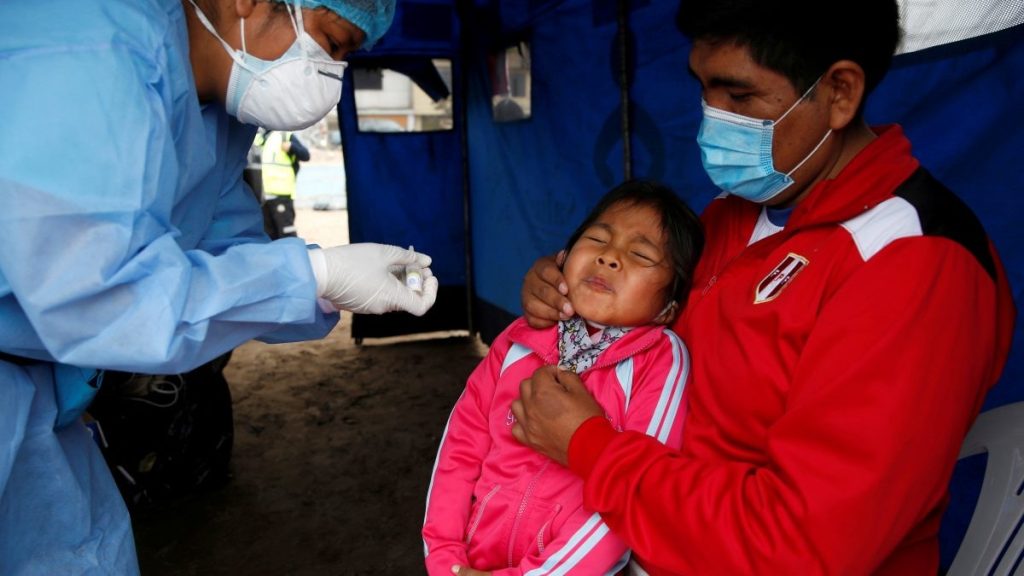Global Childhood Immunization Sees Progress, But Challenges Remain
The World Health Organization (WHO) and UNICEF released new data revealing a mixed picture of global childhood immunization in 2024. While one million more children received the complete three-dose diphtheria, tetanus, and pertussis (DTP) vaccine compared to 2023, significant challenges persist, threatening to hinder progress and leave millions vulnerable to preventable diseases.
The DTP vaccine serves as a critical indicator of overall immunization coverage, and the data shows that 89% of infants globally, approximately 115 million, received at least one dose in 2024. Around 109 million infants completed the full three-dose series, offering crucial protection against these potentially life-threatening illnesses. Despite this positive trend, nearly 20 million infants missed at least one DTP dose, a concerning figure that highlights persistent inequalities in access to vaccination. Among these, a staggering 14.3 million children – categorized as “zero-dose” – received no vaccinations at all, representing a significant setback in the global effort to protect children from preventable diseases. This number is 4 million more than the target set for the year, placing the world off track to achieve the Immunization Agenda 2030 goals.
The Immunization Agenda 2030 aims to halve the number of zero-dose children and achieve at least 90% global immunization coverage. However, the current data indicates a growing gap between aspirations and reality. Experts at WHO and UNICEF express concern that this “glass ceiling” is becoming increasingly difficult to break through, as various factors converge to impede progress. Among these are funding shortfalls, escalating global conflicts, and the pervasive influence of misinformation surrounding vaccines, which erodes public trust and fuels vaccine hesitancy. These combined challenges create a complex landscape for immunization efforts, requiring renewed focus and innovative strategies to overcome them.
Conflict and humanitarian crises significantly impact immunization coverage. The report reveals that a quarter of the world’s infants live in 26 countries affected by such crises, and these nations account for half of all unvaccinated children globally. In some of these fragile settings, the number of unvaccinated children has dramatically increased, highlighting the devastating consequences of instability on healthcare systems and access to essential services like vaccination. The data shows a concerning trend of declining or stagnating vaccination rates in many regions, underscoring the urgency to address the root causes of these disparities and ensure that vulnerable populations are not left behind.
Despite the complex challenges, there have been notable successes in scaling up vaccination programs for other diseases, including human papillomavirus (HPV), meningitis, pneumococcal disease, polio, and rotavirus. For example, HPV vaccination coverage among eligible adolescent girls has increased significantly, from 17% in 2019 to 31% in 2024. While this remains far from the 90% target set for 2030, it demonstrates the potential for progress even amidst significant obstacles. Similarly, global measles coverage has shown improvement, though it still falls short of the 95% needed to prevent outbreaks.
Looking ahead, the international community must address the multiple factors hindering progress towards global immunization goals. Investing in strengthened healthcare systems, particularly in conflict-affected and fragile states, is paramount. Countering vaccine misinformation through effective communication and community engagement is crucial to build trust and ensure widespread vaccine uptake. Furthermore, sustained financial commitment and international cooperation are essential to support immunization programs and reach the most vulnerable populations. The successes achieved with vaccines like HPV demonstrate that progress is possible, but concerted efforts are required to overcome the current challenges and ensure a healthier future for all children. The current data serves as a stark reminder of the urgent need to prioritize immunization as a cornerstone of global health security and child well-being.


